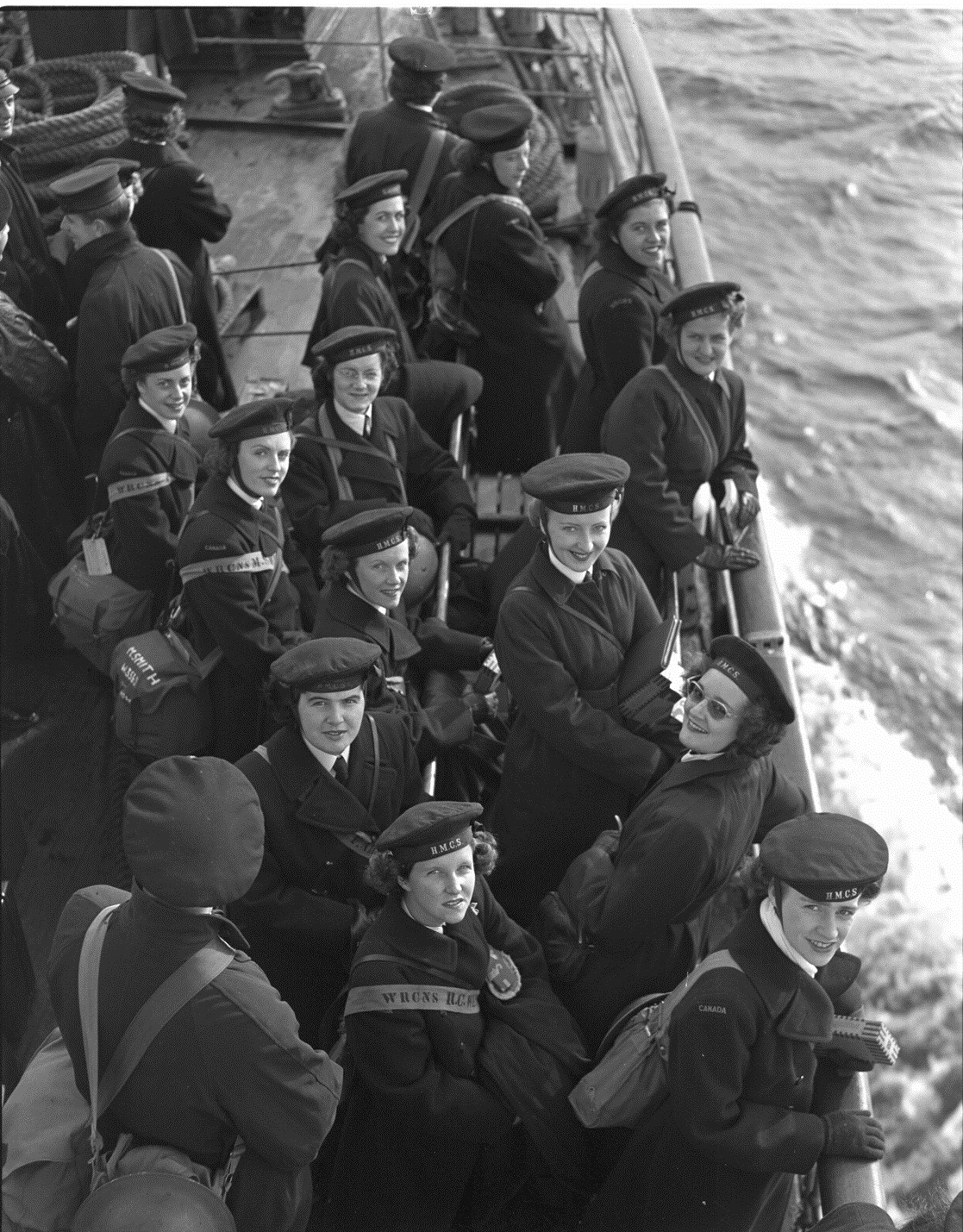Wheldon C Kearney served in the Royal Canadian Navy during the Second World War. After VE Day (May 8th, 1945), he volunteered for Pacific duty.
Please be advised that Memory Project primary sources may deal with personal testimony that reflect the speaker’s recollections and interpretations of events. Individual testimony does not necessarily reflect the views of the Memory Project and Historica Canada.
Transcript
I spent two months in Calgary at HMCS Tecumseh where I enlisted before being drafted to HMCS York, which was the CNE [Canadian National Exhibition] automotive building in Toronto. But three weeks was all I spent there and then onto HMCS Cornwallis at Deep Brook, Nova Scotia, for basic training. And that was about, I don’t remember exactly how long but when we were drafted from there to St. Hyacinthe [Quebec] for the wireless training, I had gone to the sick bay, I had a bad cold and I wanted to get a couple of aspirins so I could do what my uncle had said, run around the block a couple of times, take two aspirins and get to bed and cover up, sweat it out. But they put me in hospital for a week, so I missed the draft while the others went right into their classes in St. Hyacinthe’s. But I found out that the rest of the class that graduated the same time within the 30 days, a third of them had gone down at sea. So I guess somebody was looking after me pretty well.
Well, when it came time for VE Day, on the 8th of May, 1945, the captain called each one of us in for a separate interview and asked, did we want to take our discharge or volunteer for Pacific duty. Now, gee, I haven’t seen any action, it’s about time I did, so I said, I’d like to go but all the guys have been talking about glory seekers and ribbon hunters and so on over in the mess deck and I said, I can’t face them if I volunteer to go. And he says, well, they won’t even have a chance talk to you because if you agree to volunteer for Pacific duty, you go get your gear and the truck will be waiting for you to take you to the station and you’re on a month’s leave before you report to HMCS Prince Robert at Esquimalt [British Columbia].
We ended up on the Prince Robert, they took it out on the street for shakedown trials after its re-commissioning, they had a bunch of “Wren” officers [members of the Women’s Royal Naval Service, nicknamed “Wrens”], they took onboard to show off the firepower of the 10 four inch guns. And so out on the street, they fired all 10 guns to port and then swung around and fired them all to starboard and right away without even coding, I got being a wireless operator, I was on duty at the time and when Esquimalt started to call with a most urgent priority message without even coding it and they said shells are landing, you know, Bay district of Victoria. So as soon as that got up to the bridge, all firing stopped and I understand the captain was disciplined over that. But what happened in the Victoria Times Colonist [newspaper]that night, the headlines says, “Japs shell Victoria”. And someone had been down on the beach cleaning up when a shell landed in the water and another one closer to the beach and the next one hit the beach, he says, had there been one more, it would have been right through my house. So with those stories in the paper, that was all that was ever said about it.
So after the shakedown trials, then we fueled up and headed for Treasure Island in San Francisco Bay to take on some Bofors, the [20mm] guns. We were actually classified as an anti-aircraft cruiser and take on these guns, so we would be using same ammunition and everything as the U.S. Navy in the Pacific. And then after we left there, we were heading to join the British Pacific Fleet in Sydney, Australia. We started heading out about 6:00 in the morning and at about 9:00, when word came that Japan had finally agreed to surrender, all the ships started blasting their horns and they wheeled around and headed back for Sydney but we kept going.
It’s funny on the way north, Japan hadn’t been able to tell all their forces that they were to pack up and go home and I understand some of them were still fighting months after that because there was no way to get communication from Tokyo. And as we passed along New Guinea, you could see the flashes of the big guns as the Japanese and Australians were fighting it out with each other, we traveled in total darkness.
And as we approached Hong Kong, I had copies of the messages that were sent back and forth between commander in chief, British Pacific Fleet, and command in chief, Hong Kong/Japan, in which they told Hong Kong/Japan that we were coming in to take over and the answer came back, wait until tomorrow, we’ll sweep a channel for you. The answer from King George V commander in chief says, we’re coming in now. They released the prisoners of war from Sham Shui Po prison camp on the other side of the island and they were really emaciated. But we brought a bunch of them back to Canada with us.

 Share on Facebook
Share on Facebook Share on X
Share on X Share by Email
Share by Email Share on Google Classroom
Share on Google Classroom






